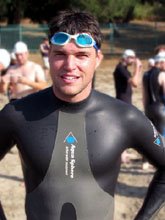In my five decades as a personal trainer (okay, maybe not quite that many), I’ve noticed that just about all my clients at some point bring up their memories of the Presidential Physical Fitness Test.
For those of you who escaped particular ritual, the Presidential Physical Fitness Test is a series of drills that elementary and middle-school students are required to perform, usually twice a year, in gym class. When I was a lad, the tests included maximum sit-ups in one minute, a one-mile run and a 50-yard dash (both for time), a standing long jump, and maximum pull-ups or flexed-arm hang for time. You’d receive the instructions, do each drill, consult a wall chart, and report your percentile score back to the gym teacher. If you scored above the 85th percentile in each event, you’d get an official-looking iron-on patch adorned with a noble and very fit-looking eagle.
Now I personally never managed to nab a Presidential Award patch. It wasn’t, however, for want of trying. In the weeks leading up to the test, I remember doing flexed-arm hang workouts on the tire-swing rope behind our house, situp workouts with my feet jammed under our green-striped, prickly-fabric couch in the living room, sprints up and down the street. It’s ironic to me looking back now that the one event that scuppered my chances of collecting one of those coveted patches was the single event for which I appear to have some aptitude as an athletic adult: the mile run. As an asthmatic kid, I could never middle- or long-distance run worth a plug nickel. It wasn’t until well past adolescence, long after my eligibility for a Presidential Award iron-on patch had tragically expired, that I discovered that strength-endurance—the ability to sustain a high level of effort for relatively long periods—was actually something I had a knack for.
I did some poking around on this new “internet” thing and have discovered that times have changed a little since I was sweating my way through the Presidentials: a shuttle run has replaced the 50-yard dash; the standing long jump has apparently been eliminated; and a sit-and-reach test has been added as a test of flexibility.
I could nitpick these particular choices till the cows come home, but I’m not going to because the REAL point I want to make here is about the other major change that has taken place in the administration of the Presidentials. Nowadays, instead of giving awards only to the truly outstanding kids who score at or above the 85th percentile on all five tests, everyone gets a patch. That’s right: show up for gym class on that day—which you’re legally required to do anyway, incidentally--shamble your half-assed way through a handful of exercises, and yes, you too can be the proud recipient of a “Participation Patch.”
This patch looks only SLIGHTLY different from the patch that’s now awarded to the kids who score in the 50th percentile, which in turn looks only SLIGHTLY different from the patch still given to the kids who score in the 85th percentile or better.
Now I get what’s going on here, folks: gym class can be humiliating for some kids, why single out the talented ones, why make the less athletically-inclined kids feel any worse about themselves by not getting a special patch, and one and on. I understand the argument for universal attention and praise for these kids’ efforts.
But I ask you: does ANY elementary-school kid, from the smartipants-iest A-student to the most remedial barely-functioning slacker, really think that those participation patches are worth the cloth they’re printed on? Do they really make ANY kid feel remotely better about themselves? Or, more likely, do the kids recognize the lame patches as the sham that they are, designed not for the kids themselves but to make the parents and teachers feel better about themselves for praising all kids equally: outstanding, mediocre, and piss-poor alike? Do any kids actually iron those patches of participation onto their favorite sweaters and wear them proudly to their family reunion, regaling aunts and uncles and cousins and grandparents with the tale of ‘The Day I Really Actually Tried To Walk a Whole Mile In A Row All By Myself?’
One of these days I’m going to create a shrine with all the Awards for Mediocrity that are now being handed out in sad homage to our sinking self-esteem, our plummeting standards for excellence, and our woeful horror that our children can’t handle being honestly evaluated for the quality of anything that they do, ever. Being good at something, by definition, means being, well, BETTER than other kids at it. Meaning that not everyone can be number one, or number 85th percentile, in everything, all the time. Your Baby Einstein might in fact be a math whiz, but let’s not pretend that he’s ALSO as physically skilled as you neighbor’s Baby Jesse Owens, unless we’re going to start handing out “Certificates of Participation” in algebra to replace the cold, hard reality of that C-minus my kid brought home on her trigonometry test last week.
Am I being a fitness snob here? Do I have no sympathy for the slow kids, the kids who have no real interest in fitness or achieving excellence on the physical plane as well as a mental, or spiritual, emotional or artistic one?
Well—I do have sympathy for these people. And sadistic gym teachers who, for some unfathomable reason, think they have the right to berate and humiliate the slow kids, should be given their own personal circle of hell in which to run laps for eternity: Mr, Ferrigno (no relation to Lou), our assistant gym teacher, was a dyed-in-the-wool prick for calling my overweight friend Jon Cogswell “Mr. Pigswell” when we were in middle school. So maybe the “give everyone a patch” mentality serves as an appropriate corrective to the Mr. Ferrignos of the world.
But unfeeling gym teachers aside, part of growing up is recognizing that it’s possible to accept and improve on one’s weaknesses even while building on and cultivating one’s strengths. Guess what? Being able to muddle through an activity or a situation in which one is not naturally gifted, and do so with grace and humor, is an important life skill.
Personally, I spend about 90% of my time practicing it.
Many years after the Presidentials were behind us, as my high-school class started applying for, and subsequently receiving acceptance and rejection letters from the colleges of our choice, we staked our claim to the senior lounge Wall. Tradition held that everyone who was applying to college that year would post any rejection letters they received on The Wall for all to see.
By the end of the year, The Wall was covered—floor to ceiling—with letters bearing the words “we regret to inform you…” and “at present we do not have a place…” and “you are welcome to reapply…”. Virtually no one in my class remained unscathed. Myself included (curse you, Brown University!).
To me, The Wall was a tremendous example of the triumph of solidarity and humor over despair and disappointment. Rather than hide our shame at what felt like failure, our class—and classes long before and long after ours—would share in it, proclaiming that all of us--nerds, geeks, jocks and slackers alike--had felt the sting of rejection, and that, with a little laughter and a few conciliatory hugs from sympathetic classmates, life could, and would, go on.
I’m still proud of the Wall: it meant that, as a class, we could face our failures, laugh off our inadequacies, and stare coolly down the barrel of the daunting, impenetrable world that lay ahead.
Some parents saw or heard about the Wall and were horrified: why are these students trumpeting their failures so enthusiastically? Wasn’t this a celebration of failure and mediocrity?
No, it wasn’t: the Wall was—and remains—a shrine to resilience. You want a celebration of mediocrity? Look no further than the Participation Patch.
Andrew
Monday, October 22, 2007
Subscribe to:
Post Comments (Atom)




2 comments:
The Wall sounds like a great thing...
I had no idea about the levels of Presidential Patches; both of my kids practiced for and made it to the top in the tests.
This patch thing reminds me of "Meet The Parents/Fockers," where the Fockers have a shrine to Gaylord's mediocrity, including a ribbon for 9th place.
Have a good day,
Roland
Or what about field day now??? I found out at my old elementary school they give out a ribbon to everybody at the end of the day. Same concept, make all the kids feel good about themselves I suppose.
I battled it out on field day, always competing with the same girl every year. between the two of us we'd take home all the red/blue ribbons there were :)
Post a Comment